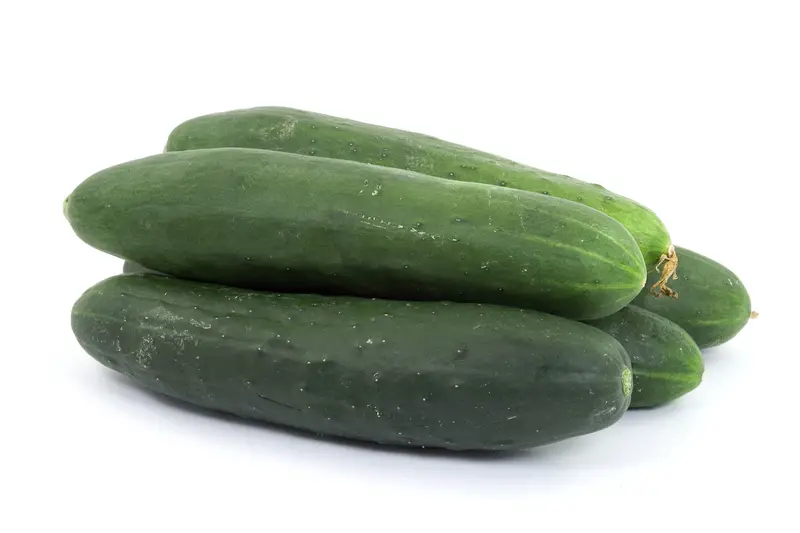Introduction
Cucumbers require a little care, just the right conditions (e.g warm, consistent water, and sunny weather). If you can ensure these, you can make them one of your top producing garden crops.
But chances are you are facing difficulties with your green variety of cucumber. If the issue is that you are getting white cucumber instead of green, it’s time to look for problems.
To keep ahead of the problems about why are my cucumbers white? Here is the explained answer to your question, especially, with brief control suggestions.
Let’s get started.

What Causes White Cucumbers?
So, what causes your beautiful cucumber to develop white streaks? White spots might be more common than this. Well, the answer is ‘for many reasons’. But here is a list of the most common causes of getting white cucumber:
- Fungal disease
- Blanching
- Excessive moisture
How To Solve?
Now, we are going to talk about the problems in detail with the possible solutions.
Problem 1: Fungal Disease
The worst-case scenario, also the most common is a fungal disease. There are several fungal diseases. Two of them are:
Powdery Mildew
When this fungal disease occurs, it begins on the upper surface of the cucumbers and looks like they have been dusted with flour. When it starts spreading, the entire fruit becomes covered with mold.
The reason why powdery mildew happens is poor air circulation and a high level of humidity.
Solution: It goes without saying that prevention is always the best. While you discover the fungus in your area, start spraying the susceptible crops 2x’s weekly with 1 tablespoon of baking soda to 1-gallon water.
Also, make the environment around your cucumber plant less hospitable to the disease. Thin plants to let them have adequate air circulation. Try to water in the morning instead of the evening (otherwise, plants will remain damp all night).
However, watering in the morning will indeed dry the plants during the sunlight hours. In this case, you may go for a drip irrigation system.
Moreover, several fungicidal products can control and eradicate powdery mildew. Such as Bioadvanced 701270A effective fungicide, Southern Ag Liquid Copper Fungicide, and so on.
Pythium Fruit Rot (Cottony Leak)
This fungal disease causes your cucumber heavy growth of white fungal mass. In the general case, the first symptoms appear in that area of cucumber which is in contact with soil (as water-soaked, small spots).
These spots start spreading very quickly to a large portion of the fruit that may result in soft and necrotic areas. In such a condition, the white mass resembles a bunch of cotton that may be seen in the infected areas.
Solution: Chemical management for this problem is to use the fungicide ultra-flourish that contains mefenoxam as an active ingredient.
Cultural management are:
- Must use sufficient plant spacing
- Plant cucumbers in well-drained soil (with adequate ditching)
- Create a barrier between fruit and soil
Problem 2: Blanching
The answer to ‘what is blanching?’ is the effect of over-shading of your cucumber fruit itself. You may be happy with the healthy-looking vines (with lush foliage), when the fruit is utterly covered by leaves, you will face blanching.
The fruit and the leaves of your cucumber plants need sunlight to develop and maintain their green color.
Solution: You must position the plants where they will get enough sunlight. That doesn’t mean your plants don’t need shade, they do. But not completely shaded, they should be shaded a tad.
You can prune the foliage back a little. It will allow them to get more sunlight. But don’t get carried away, it might end-up with a sun-scald of your fruits.
Problem 3: Excessive Moisture
Water leaches nutrients from the soil. In case, excessive watering leaches phosphorus from the soil, your favorite developing cucumber may become pale white or green. Because it deprives your plants of the nutrients that are needed for proper development.
Hence, something you should know about is the plants can trick you into watering them too often. Maybe there is plenty of moisture in the soil, but the roots can’t absorb it fast. Because water evaporates faster on hot, sunny days and it makes the leaves wilt.
Solution: To solve the first case, feed your plants with a fertilizer that contains a high level of phosphorus as well as water them only when needed. The second case may confuse you, well, don’t worry.
Be determined if the plants need watering, wait for ending the day (when the temperature and sunlight are less intense). See if the leaves revive on their own or not. If they do, no watering is needed. Otherwise, water them now.
Frequently Asked Questions
Question 1: Will it be safe to eat white cucumber?
Answer: The best option is not to eat any diseased white cucumber. But the white ones that are because of too much rain or blanching, are safe to eat. However, nutrient deficiency might result in a significant loss of flavor.
Question 2: Should I water cucumbers every day?
Answer: Cucumbers need 1 and 2 inches of water per week, definitely depending on the soil type and the weather. It’s good to water deeply once or twice a week, especially if you are planting in sandy soil.
Question 3: What is the best fertilizer for my cucumber plants?
Answer: The best source of nutrients for cucumbers is well-aged compost. It has only 2% nitrogen as well as it releases slowly over many years. So, it will add nutrient reserves that remain available in the soil for a long time.
Conclusion
That is all we wanted to say to you, friend. We compiled everything you need to know about the white cucumbers. Also, the FAQ section was there to rub off your confusion regarding this issue.
As we left no stone unturned, you now got your answer to ‘why are my cucumbers are white?’ Well, then identify which your plant is facing and go for the solutions.
Good luck!
